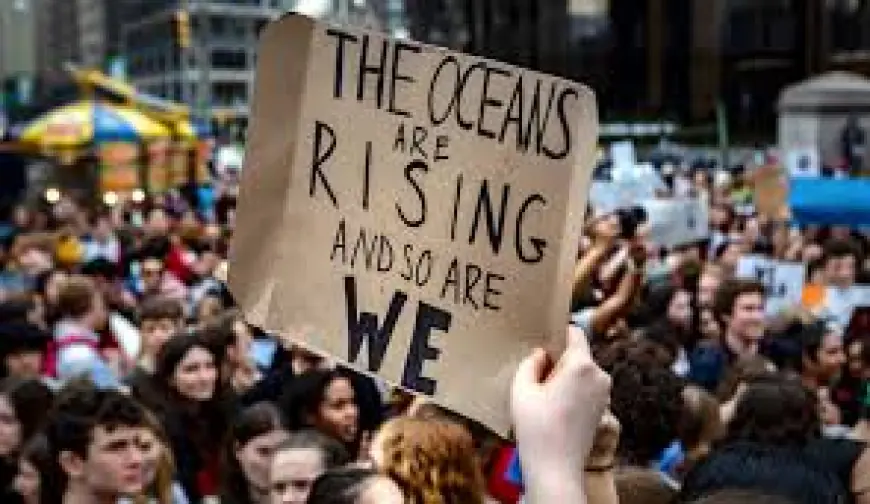How Youth Movements Are Reshaping Political Landscapes
Lately, I've been noticing how much influence younger generations have been gaining in political discussions.

The Power of Youth in Politics
Lately, I've been noticing how much influence younger generations have been gaining in political discussions. The shift is hard to ignore. From social media campaigns to climate strikes and grassroots activism, youth movements are no longer a fringe element of politics; they are shaping the way we think about government, justice, and policy. In fact, it feels like young people are becoming more vocal and proactive in driving change than ever before.
For a long time, political debates and movements were dominated by older generations. But today, it’s the youth leading the charge—questioning the status quo, holding leaders accountable, and pushing for reforms that directly impact their futures. It's inspiring to watch these young voices make a difference in ways that I never imagined when I was their age.
Youth-Led Movements: The New Political Force
I’ve always believed that change comes from action, and youth movements are a perfect example of this principle. Whether it's protesting for climate justice, advocating for better mental health care, or fighting for social equality, young people are passionate and unafraid to take to the streets or the digital space to get their message across.
Here are some key characteristics of youth-led movements:
-
Online Presence: Social media has become a powerful tool for organizing and spreading messages. Platforms like Twitter, Instagram, and TikTok allow young activists to reach millions of people instantly.
-
Global Impact: These movements are not confined to one country or region. Whether it’s the #FridaysForFuture climate strikes or the global calls for racial justice, youth activism knows no borders.
-
Cultural Shifts: Beyond political changes, youth movements are helping redefine social norms. For example, younger generations are more open to conversations around mental health, gender equality, and environmental sustainability.
It’s this ability to mobilize quickly, speak openly, and challenge traditional systems that makes youth movements so effective. As someone who’s followed a range of social causes, I’m continuously amazed at how these movements are changing the political game.
How Youth Movements Influence Policy Change
One thing that stands out to me is how youth-led activism is directly influencing policy change. We’re seeing more politicians engage with youth activists and take their demands seriously. These movements are driving political conversations in ways that force policymakers to reckon with the issues that matter most to younger people, like climate change, student debt, and affordable healthcare.
It’s not just about making noise. Youth movements are well-organized and focused on actionable goals. For example:
-
Climate Action: The youth climate strikes, inspired by Greta Thunberg, have pushed governments to reconsider their environmental policies. Young people are not just protesting; they’re demanding policy action on climate change.
-
Voting Rights: Young people are playing a major role in pushing for voting rights reforms and greater access to the ballot box. By getting involved in campaigns, they're demanding that their voices be heard in the democratic process.
-
Social Justice: Issues like racial equality, LGBTQ+ rights, and gender justice are at the forefront of youth movements, calling on leaders to take more progressive stances on civil rights issues.
I’ve noticed how younger people are no longer waiting for permission to get involved. They’re taking it upon themselves to engage with the political process, often through digital platforms, and it’s making a real impact on political discourse.
The Role of Technology in Youth Activism
Technology has played a significant role in empowering youth movements. In today’s digital age, organizing protests, petitions, and campaigns is as easy as posting on social media. These tools have allowed youth activists to connect across borders, form global alliances, and influence political leaders in ways that weren’t possible before.
One of the things that struck me was how quickly information spreads. When youth movements take action, the world knows about it almost instantly. This has put pressure on politicians to respond faster to the demands of young people. The combination of youth passion and digital connectivity is a powerful force for change.
As I reflect on how technology has made it easier for young people to push for change, I also see how it’s influenced the way we approach personal choices. For example, when it comes to choosing products—whether it’s fashion, technology, or even vaping products—there’s a growing demand for sustainability and transparency. This shift is reflective of the same values that youth movements advocate for: responsibility, integrity, and consideration for the future.
I often find myself thinking about these values when I explore new products like raz 0 nicotine vapes or other items that promote responsible, healthy choices. Whether in politics or consumerism, the focus on long-term impact is clear.
The Intersection of Youth Movements and Consumer Choices
What fascinates me is how these youth movements and their political causes are starting to shape consumer behavior. It’s no longer enough for companies to sell a product; now, they have to align with the values of a generation that cares deeply about sustainability, fairness, and accountability.
Take the mr fog new line of vapes, for example. As a consumer, I’m seeing more products that offer options with minimal environmental impact and a focus on user safety. There’s also a growing interest in brands that incorporate social responsibility into their business models. This isn’t just a trend—it’s a reflection of how young people are reshaping industries, demanding change from the ground up, and holding brands to higher standards.
I think the same way about political movements. Just as young people are pushing for new policies, they’re also pushing for businesses to be more transparent and to act in the interest of society. It’s a seamless connection between personal choices and global action.
Looking Forward: The Future of Youth Movements in Politics
So where do we go from here? As I see it, youth movements are only going to get stronger. They’ve already proven that they can make waves on social media, in the streets, and even in the halls of government. With more young people voting, advocating for change, and running for office themselves, the influence of these movements will only continue to grow.
One thing is certain: political landscapes are changing. Youth movements are driving that change, and they aren’t backing down. Whether it’s through advocating for climate change policy, pushing for better healthcare systems, or demanding justice on social issues, young people are making their voices heard.
I’m excited to see where this momentum leads, not just in the political world but in the way we make choices as consumers, too. We’re all part of a larger movement, whether we realize it or not. Just like with vaping products—like the mr. fog vape that I might pick up when I need a break from the usual routine—small decisions add up. Each choice I make, from my personal habits to the brands I support, contributes to the kind of future I want to see.
In the end, it's not just about what happens today. It's about how we shape tomorrow, through both politics and everyday actions. And with the energy of youth behind it all, I feel hopeful that the future will be brighter.
What's Your Reaction?
 Like
0
Like
0
 Dislike
0
Dislike
0
 Love
0
Love
0
 Funny
0
Funny
0
 Angry
0
Angry
0
 Sad
0
Sad
0
 Wow
0
Wow
0
















































